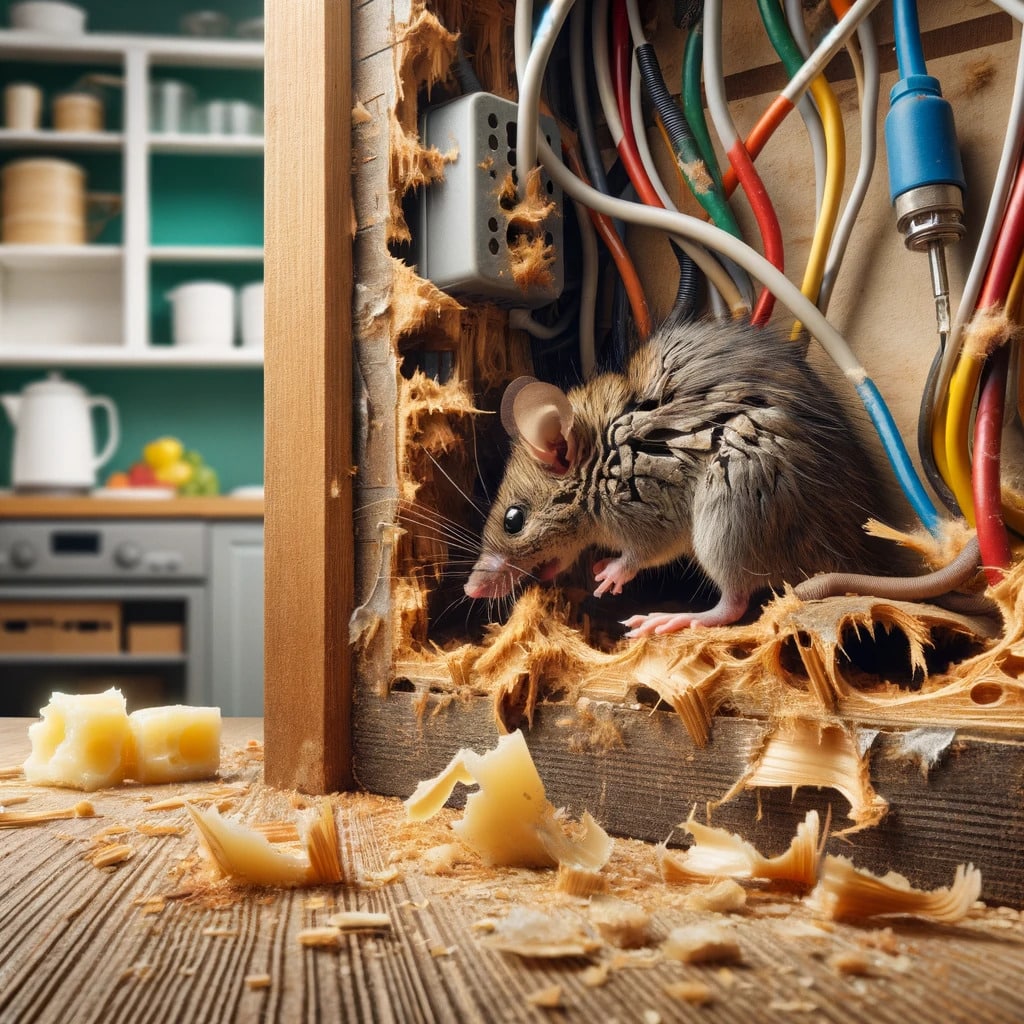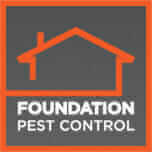Roof Rat Problem Signs

5 Signs You Have a Roof Rat Problem
Roof rats, also known as black rats or ship rats, are a common pest that can cause significant damage to your home and pose health risks to your family. Identifying the signs of a roof rat infestation early is crucial for effective pest control. Our roof rat removal team at Foundation Pest Control walks you through the key indicators that roof rats may have invaded your property, as well as provide tips on prevention and eradication.
So What Are Roof Rats?
Roof rats are a species of rodent known for their climbing abilities, often nesting in the upper parts of buildings such as attics, roofs, and ceilings. Unlike their larger counterparts, Norway rats, roof rats are smaller and more agile, making them particularly adept at accessing hard-to-reach areas. Recognizing the signs of a roof rat infestation can save you from extensive property damage and potential health issues.
Droppings and Urine Stains
One of the most noticeable signs of a roof rat problem is the presence of droppings. Roof rat droppings are typically spindle-shaped, about half an inch long, and pointed at both ends. They can be found in areas where the rats are active, such as attics, basements, and along walls. In addition to droppings, urine stains may also be visible, often detected by a strong, musty odor.
Gnaw Marks and Damage
Roof rats have a constant need to gnaw to keep their teeth from growing too long. As a result, you may find gnaw marks on a variety of surfaces, including wood, plastic, and electrical wiring. This behavior not only causes structural damage but also poses a fire hazard due to the risk of electrical shorts. Look for chewed food packages and gnawed holes in walls or ceilings as clear indicators of an infestation.
Nests and Nesting Materials
Roof rats are known to build nests using a range of materials such as insulation, paper, and fabric. These nests are typically found in secluded, elevated areas like attics, wall voids, and roof spaces. If you come across a nest, it is a strong sign that roof rats have taken up residence in your home. Additionally, you may notice shredded materials scattered around nesting sites.
Nocturnal Noises
Roof rats are nocturnal creatures, meaning they are most active during the night. Homeowners often report hearing scratching, scurrying, or gnawing noises coming from above, particularly in the attic or walls. These sounds are most noticeable during the quiet hours of the night and can be a reliable indication of roof rat activity.
Visual Sightings
Although roof rats are elusive and prefer to stay hidden, occasional sightings can occur, especially if the infestation is severe. You might spot a roof rat running along rafters, wires, or branches near your home. Roof rats are slender, with large ears and a tail longer than their body. If you see a rat that matches this description, it is likely a roof rat.
Prevention and Control Measures for Your Roof Rat Problem
Preventing a roof rat infestation requires a combination of sanitation, exclusion, and monitoring. Here are some effective strategies to keep these pests at bay:
Sanitation
Maintaining a clean environment is crucial in deterring roof rats. Ensure that food is stored in sealed containers, garbage is disposed of regularly, and potential food sources are eliminated. Additionally, keep outdoor areas free of clutter, fallen fruits, and pet food to reduce attractants.
Exclusion
Sealing entry points is essential to prevent roof rats from entering your home. Inspect the exterior of your property for gaps, cracks, and holes, paying close attention to areas where utilities enter the building. Use materials such as steel wool, hardware cloth, and caulk to seal any openings larger than a quarter-inch.
Traps and Baits
Traps and baits can be effective tools for controlling roof rat populations. Snap traps, live traps, and electronic traps are commonly used, and they should be placed along known rat pathways and near entry points. When using baits, ensure they are placed in tamper-resistant bait stations to prevent accidental exposure to pets and children.
Professional Pest Control for Your Roof Rat Problem
In cases of severe infestations or when DIY methods prove insufficient, professional pest control services may be necessary. Pest control experts have the knowledge, experience, and tools to effectively eradicate roof rats and prevent future infestations. They can also provide valuable advice on long-term prevention strategies tailored to your specific situation.
Roof Rat Problem FAQs
How do I know if I have a roof rat infestation?
Signs of a roof rat infestation include droppings, gnaw marks, nests, nocturnal noises, and visual sightings. If you notice any of these indicators, it is essential to take action promptly.
What damage can roof rats cause?
Roof rats can cause significant damage by gnawing on electrical wiring, which poses a fire hazard, and by contaminating food and surfaces with their droppings and urine. They can also destroy insulation and other building materials.
Are roof rats dangerous to humans?
Yes, roof rats can pose health risks as they are known carriers of diseases such as leptospirosis, salmonella, and rat-bite fever. They can also trigger allergic reactions in some individuals.
What is the best way to prevent roof rats from entering my home?
Prevent roof rats by sealing entry points, maintaining cleanliness, and eliminating potential food sources. Regularly inspect and repair any gaps or cracks in your home’s exterior.
Can roof rats be removed without professional help?
While DIY methods like traps and baits can be effective, severe infestations often require professional pest control services for complete eradication and prevention of future issues.
How quickly can a roof rat infestation grow?
Roof rats reproduce rapidly, with a single female capable of producing several litters per year. This means that a small infestation can quickly escalate if not addressed promptly.
Time To Take Care Of Your Roof Rat Problem
Addressing a roof rat infestation promptly is crucial to protecting your home and health. By understanding the signs of an infestation and implementing effective prevention and control measures, you can keep these unwelcome rodents at bay. Remember, if you encounter a severe infestation or are unsure about handling the problem yourself, professional pest control services are always available to assist you.

